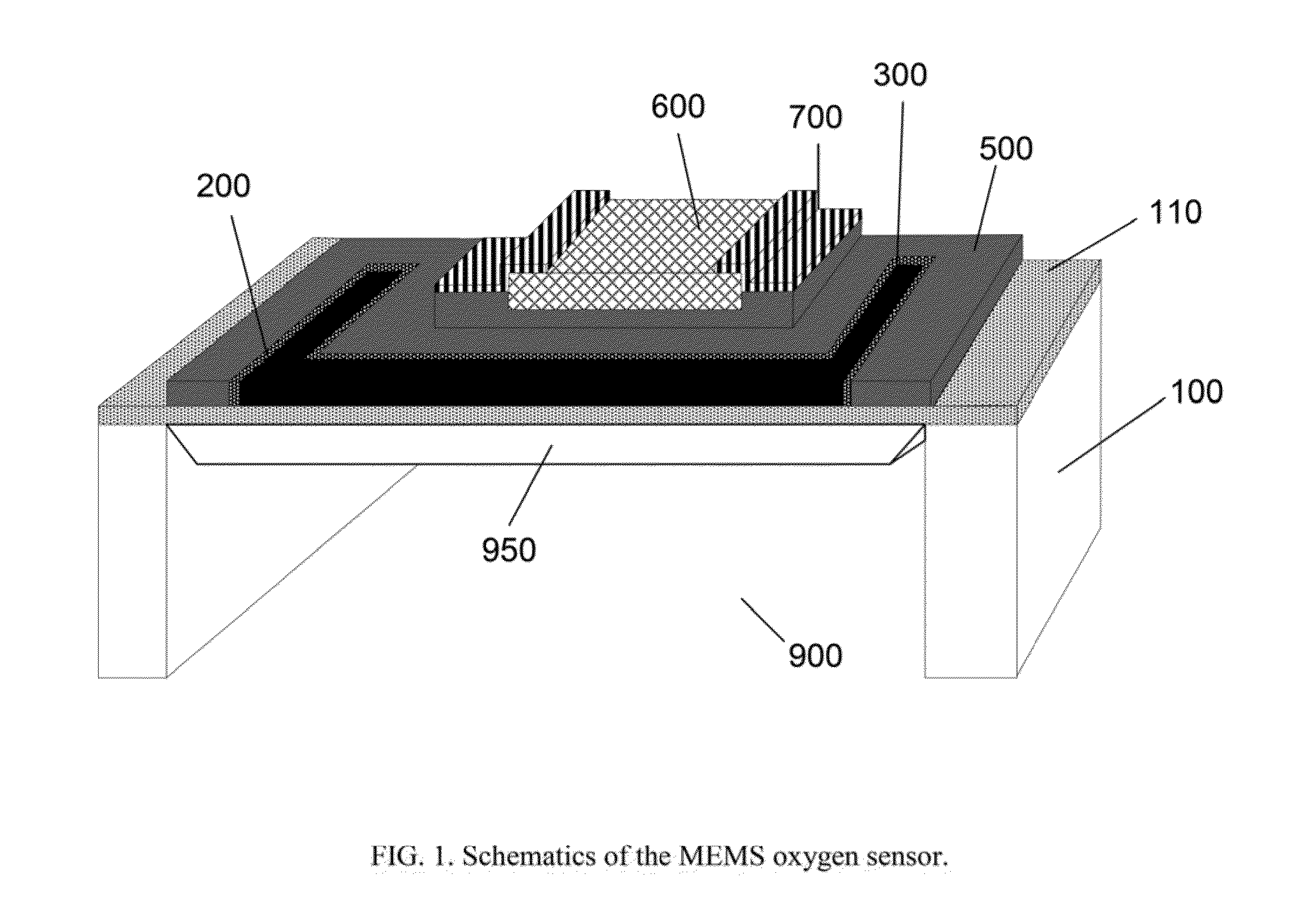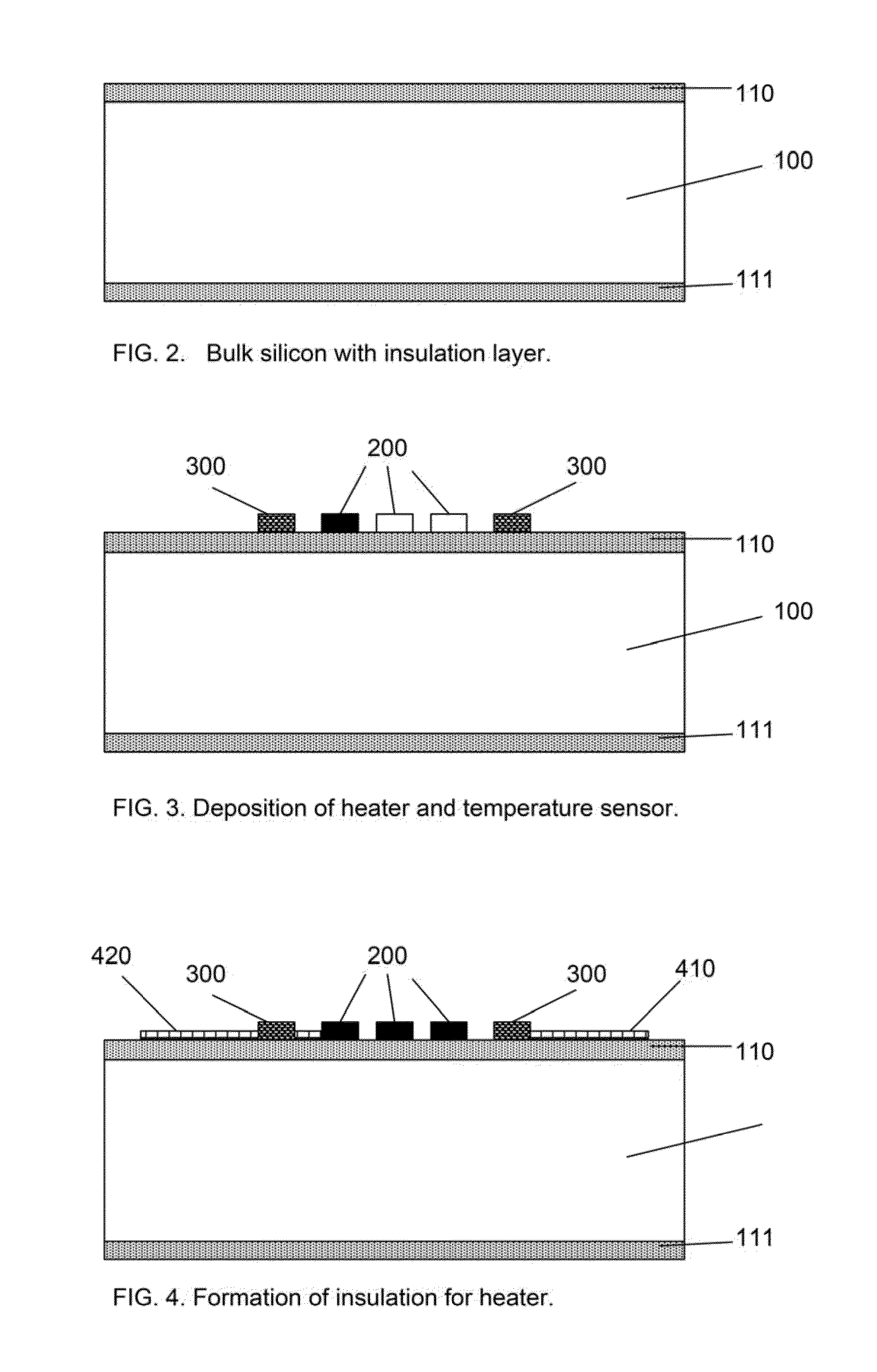Micromachined oxygen sensor and method of making the same
a micro-machined oxygen sensor and oxygen sensor technology, applied in the field of micro-machined oxygen sensors or micro-electromagnetic systems, can solve the problems of long response time and limited life time, high cost, and high cost, and achieve the effects of low cost, fast response time and easy manufacturing
- Summary
- Abstract
- Description
- Claims
- Application Information
AI Technical Summary
Benefits of technology
Problems solved by technology
Method used
Image
Examples
Embodiment Construction
[0031]The preferred structure of the said micromachined oxygen concentration sensor is illustrated in FIG. 1. The substrate of toe sensor is preferably a silicon single crystal water 100, and the membrane 110 that supports the sensing hierarchy structure. The micro-heater 200 and the temperature sensor 300 shall form a microsystem that provides the required thermal energy for the sensing materials of the solid electrolyte. The sensing materials 600 is preferably yttrium stabilized zirconia oxide and the two electrodes 700 with porous platinum form the amperometric cells for the oxygen concentration sensing at a large dynamic range.
[0032]The preferred mieromachining process for making of the said invention starts from the preparation of the isolation cavity process mask and process stop (110 and 111) on the single crystal silicon substrate (100) with a thickness from 0.35 to 0.50 mm. Then the process is followed by the membrane formation for supporting the sensing hierarchy structure...
PUM
| Property | Measurement | Unit |
|---|---|---|
| operating temperature | aaaaa | aaaaa |
| size | aaaaa | aaaaa |
| temperature | aaaaa | aaaaa |
Abstract
Description
Claims
Application Information
 Login to View More
Login to View More - R&D
- Intellectual Property
- Life Sciences
- Materials
- Tech Scout
- Unparalleled Data Quality
- Higher Quality Content
- 60% Fewer Hallucinations
Browse by: Latest US Patents, China's latest patents, Technical Efficacy Thesaurus, Application Domain, Technology Topic, Popular Technical Reports.
© 2025 PatSnap. All rights reserved.Legal|Privacy policy|Modern Slavery Act Transparency Statement|Sitemap|About US| Contact US: help@patsnap.com



